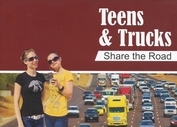 This week law enforcement agencies across the United States have been engaged in heightened traffic safety enforcement and education aimed at unsafe driving behaviors by both car drivers and drivers of commercial vehicles, including semitrailer trucks and buses. The effort is a campaign spearheaded by the Federal Motor Carrier Safety Administration (FMCSA) called “Operation Safe Driver Week.”
This week law enforcement agencies across the United States have been engaged in heightened traffic safety enforcement and education aimed at unsafe driving behaviors by both car drivers and drivers of commercial vehicles, including semitrailer trucks and buses. The effort is a campaign spearheaded by the Federal Motor Carrier Safety Administration (FMCSA) called “Operation Safe Driver Week.”
Every year, about 4000 people are killed and about 100,000 are injured in large truck and bus crashes in the U.S. Many of these accidents are caused by negligent drivers who are too tired to driver, use their cell phones (talking and texting) or speed.
“I have had clients who suffered amputations, severe traumatic brain injury and other serious injuries caused by negligent bus and truck drivers,” said Fred Pritzker, a national traffic safety lawyer whose law firm recently won a $5 million settlement for one client. “Drivers of these large vehicles are required by law to drive safely, and most of them do, but those that don’t are a hazard on the roads.”
Nearly all crashes involving trucks and buses are preventable, according to FMCSA. The agency’s message to all drivers is as follows:
Be courteous and stay alert –never allow yourself to become distracted– and be sure to take extra precautions when sharing the road with large trucks and buses.
As part of Operation Safe Driver Week, FMCSA has identified a priority list of 300 high-risk bus and truck companies and 365 commercial drivers. The goal is to bring them into compliance with federal safety regulations or take them off of the road.
National Teen Driver Safety Week
To highlight the problem with teen driving, this year’s Operation Safe Driver campaign coincides with National Teen Driver Safety Week, a campaign spearheaded by the National Highway Traffic Safety Administration. The goal is to promote the following 6 points:
- NO cell phone use while driving;
- NO speeding (driving faster than the speed limit or for road and traffic conditions);
- NO extra passengers (teens driving teens is often a bad idea);
- NO alcohol or other drugs before or while driving;
- NO driving or riding without a seat belt; and
NO driving in the “NO Zones”–along the sides, front, and back of big trucks and buses where you can’t been seen by the driver.